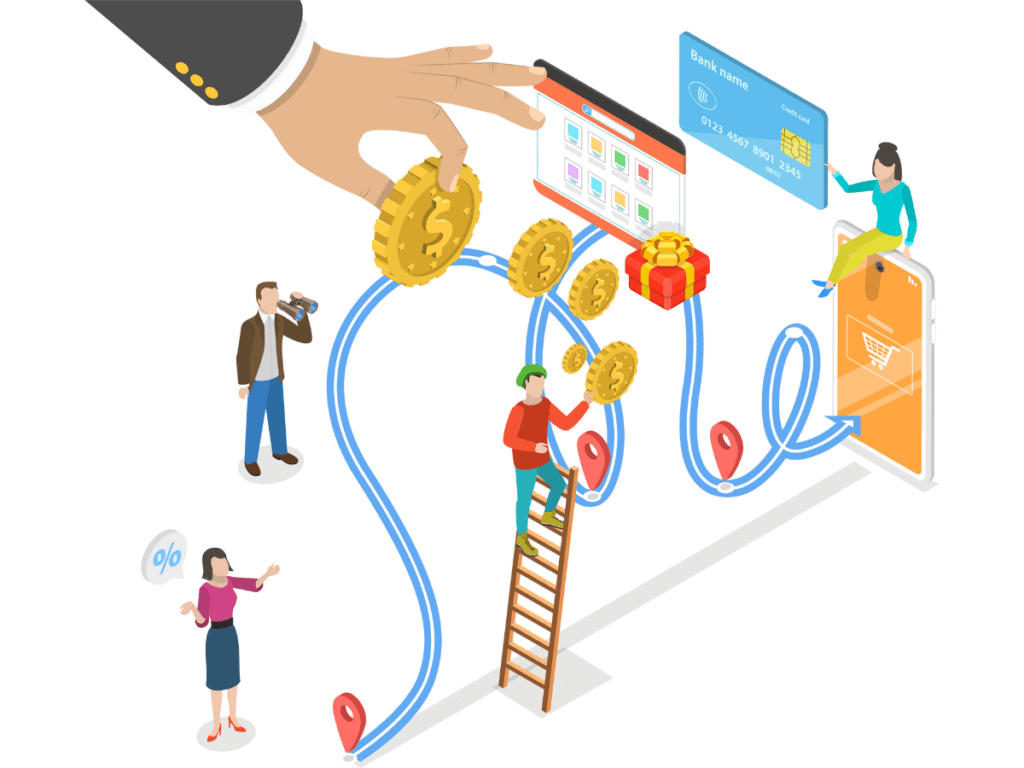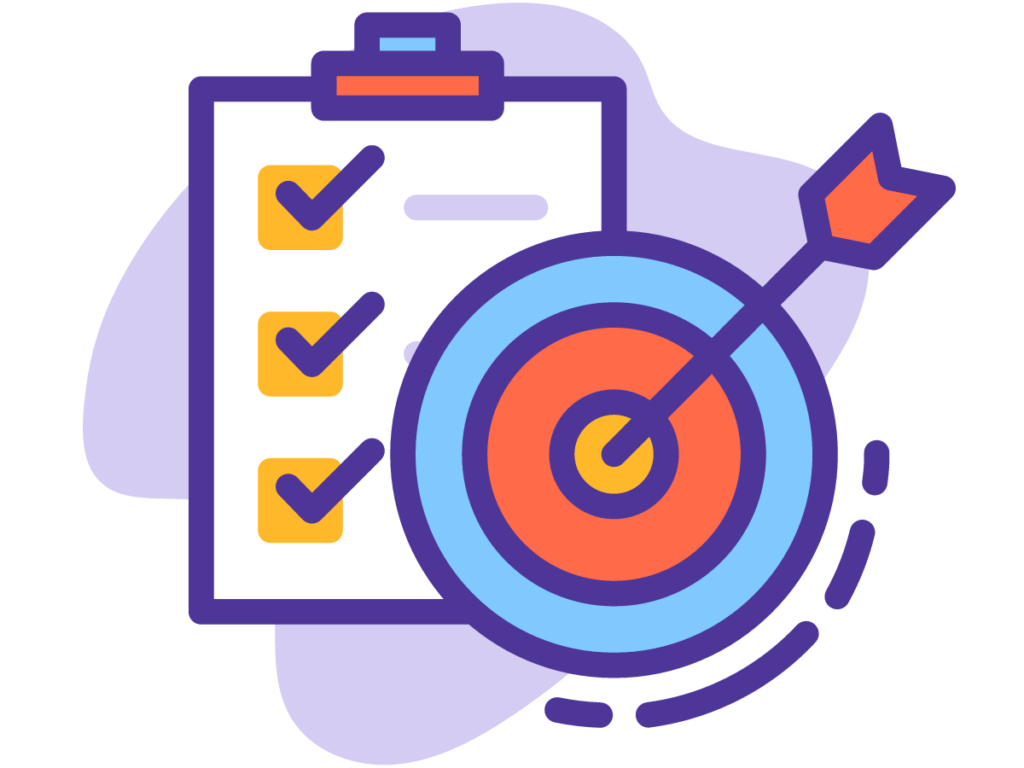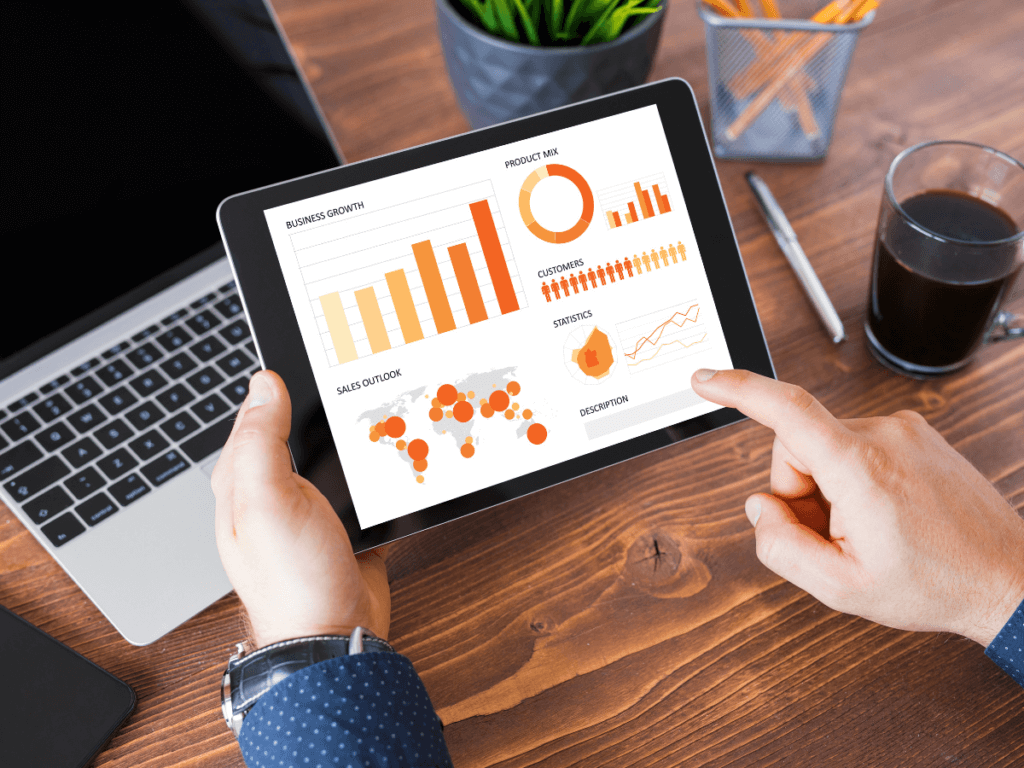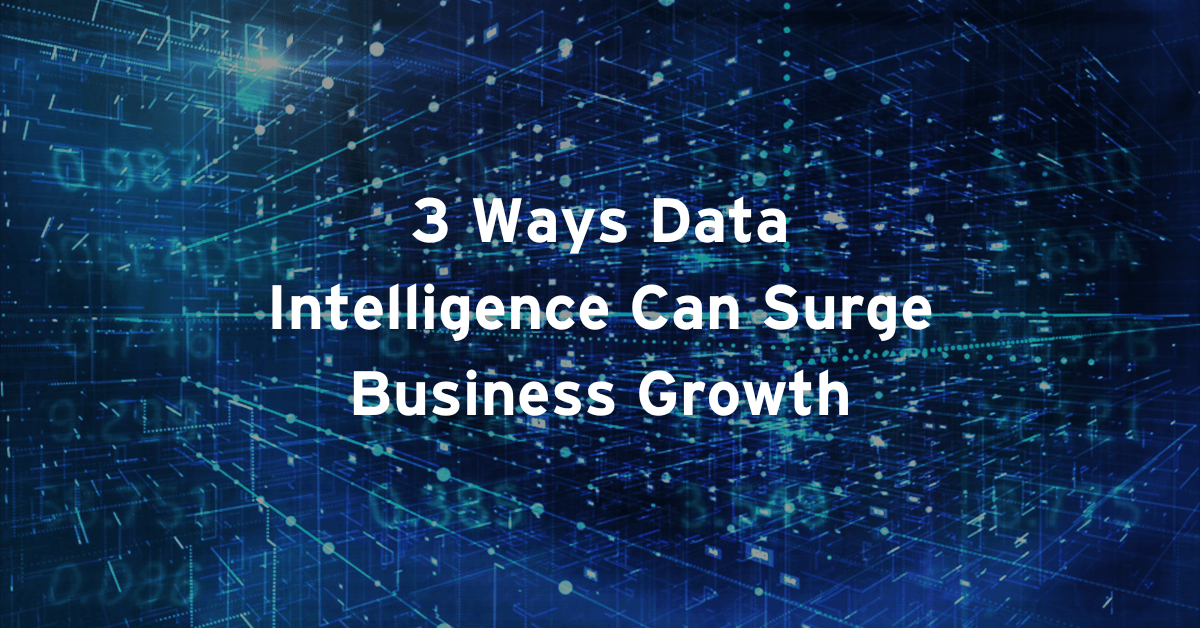We have access to more data and audience analytics now than ever before. With the increase in audience data, there has also been an increase in using data intelligence to inform business decisions. How well a business utilizes data intelligence determines their growth. But how can YOU most effectively use data intelligence to maximize your growth?
What is Data Intelligence?
What’s the difference between data intelligence and data analytics or data insights? We’ve talked in the past about the differences between data, insights, and analytics. Data itself is pure information. For example, data about your current customers (first-party data) is information such as their age, gender, location, or occupation. Analytics are finding the patterns that connect those things. Insight is the action connected to analytics.

Data intelligence encompasses all of these things. As the word intelligence implies, data intelligence is using all the pieces of data to innovate and optimize business processes and decisions.
These days, we have access to a LOT of different data streams. Companies can use physical and online audience data as well as customer data. This includes First-, Second-, and Third-Party Data, current customer demographics, IP Targeting from geofencing, social media audiences, and more. Almost every interaction a consumer has with your brand can provide data.

When businesses combine physical location data with online data, they can build a more complete picture of the consumer’s experience with their brand. This more complete picture includes all the steps the consumer has taken before they make a purchase.
This fills in the gap that was missing from old-school advertising: understanding the “why” behind the purchase. For example, in the past, marketers would make a TV ad and then buy ad space in a specific area. After the ad ran, they would look at whether sales went up or down to determine the ad’s effectiveness. However, nowadays, you could use in-ad QR codes to see how many sales actually came from that specific TV ad. When the “why” is connected to data such as sales numbers and statistics, your data becomes more intelligent.
How can data intelligence drive business growth?

Using data intelligence to inform business processes and decisions is extremely valuable to business growth. How? Understanding how and why consumers interact with your brand is the most important thing you can know in order to make any business decision.
A business is for its customers. Knowing what your customers need and why they need it tells you how you can help them. This is, after all, the purpose of your business. Using data intelligence to drive decisions gives a business the biggest tool for helping their customers and succeeding. Data-driven decisions = better help for customers = more sales = business growth. Everybody wins.
How can you use data intelligence to drive your business growth?
“Data intelligence is integral to business growth” is easier said than acted on. To actually apply data intelligence to your business, practical steps are needed. So, what are some data intelligence best practices that can help you get the most out of your data and catalyze business growth?
#1 Start with clear goals

Having well-defined goals will show you what data to focus on. Especially when it comes to marketing, clear intentions on things like audience segmenting, service goals, and new customer targeting will lead to greater success.
What are some examples of common general marketing goals? Here are seven:
- Increased brand awareness
- Expanding social media following
- Building an email list
- Improved conversion rates
- Increased website visitors
- Higher website or social media engagement rates
- Driving a higher click-through rate on ads
Obviously, every business is going to need different specifics or metrics connected to each of these general goals. But that’s the whole point of applying data intelligence. Using data intelligence makes sure the decisions you are making are the best for your business.
#2 Organize your Data properly

Since data intelligence relies on so many data streams, it’s important to keep all your data organized. There are two main components to organizing data. The first is choosing what information you actually need to organize. There’s no need to prioritize information that doesn’t have anything to do with your business or goals. The second component of organizing data is technology. Part of data intelligence is collecting as much relevant information as possible. Utilizing the proper technology is important to maintaining comprehensive data sets.
Most businesses use some type of CRM to organize their data. What is a CRM? In their simplest form, CRMs (Customer Relationship Management) organize a business’s customer contact information. However, unlike their predecessor, the Rolodex, most CRMs hold more than just contact information. CRMs can organize and keep track of almost every interaction a consumer has with a company. Being able to see an overview of all communication with a contact makes it easier to make decisions about things such as how to service them and what channels to prioritize.
#3 Use Data Enhancement and/or Third-Party Data

One good way to have the most intelligent data is to use Data Enhancement (sometimes called Data Appends.) Data enhancement is the process of going through your current marketing data, making sure it’s accurate, and then filling in any gaps. It can add additional information to current data, such as phone numbers, email addresses, or mailing addresses. Why is this valuable to data intelligence? Having accurate contact information for your current customer base makes it easier to understand them. The more information available on your current contacts, the more accurate of decisions you’ll be able to make.
When using data intelligently, you may realize that your current data isn’t exactly what you need. The point of Data Enhancement is having accurate information you actually need. This is perfect for supplementing your current data. However, if you need entirely new data, buying Third-Party Data might be what you’re looking for.
True, access to some types of Third-Party Data has changed due to online data privacy. There are still, however, many circumstances where Third-Party Data is the best and easiest option. Many marketing channels connected to Third-Party-Data haven’t been affected by data privacy. For example, buying a list for print and mail marketing campaigns is still highly effective! Lists are also great for email and phone campaigns.
As we have seen, data intelligence helps businesses best understand their customers and those customers’ needs. Data intelligence can be used to effectively make decisions that will propel businesses closer to their goals.
How do you use data to inform your business decisions? And in what ways do you think utilizing data intelligence could benefit your business? For help answering these questions, feel free to reach out to our team to find out how YOUR business could be growing.





